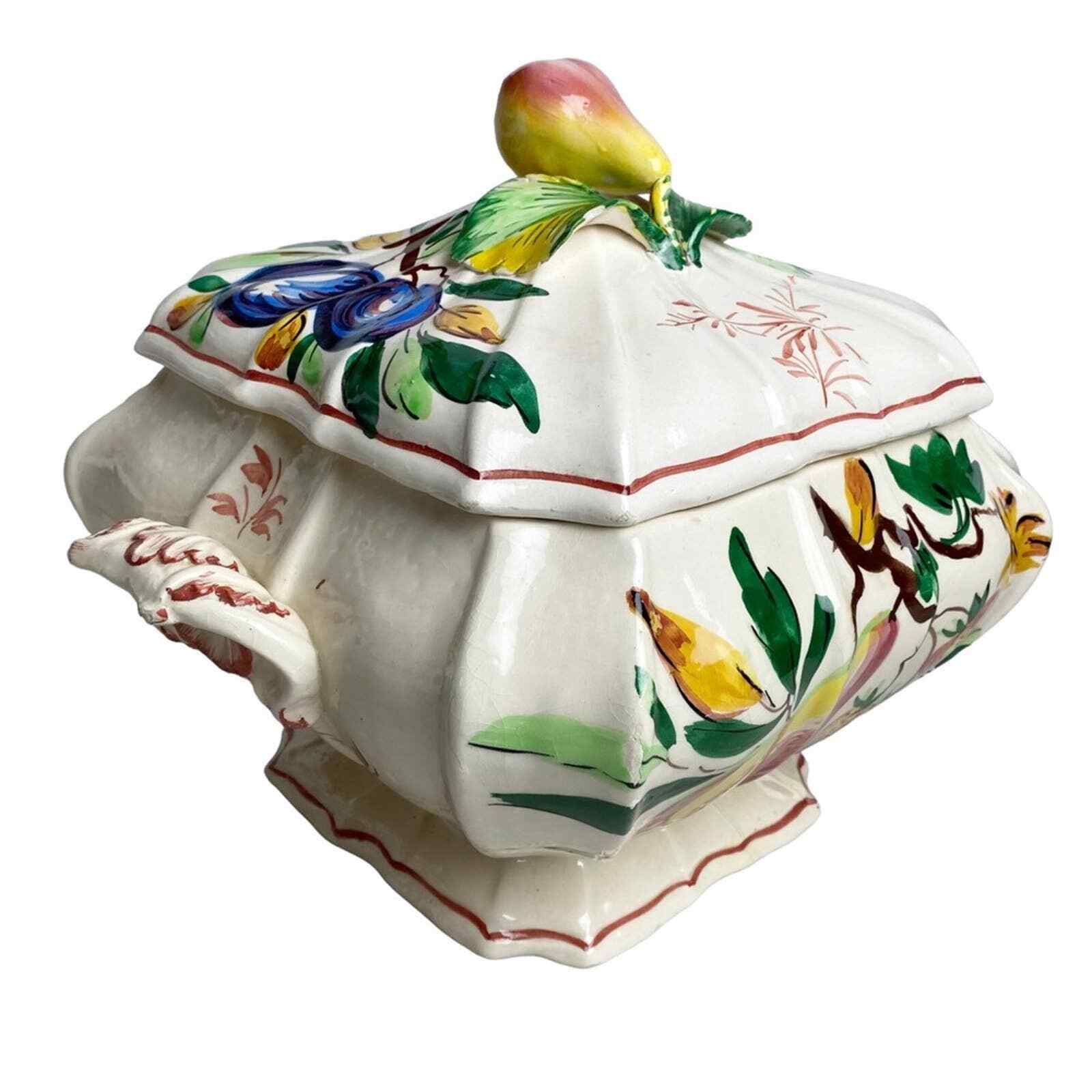-40%
ENGLISH WHITE IRONSTONE CHINA TUREEN - 1850's SCROLLED BUBBLE - J.W. PANKHURST
$ 105.59
- Description
- Size Guide
Description
EARLY AND RARE!Ironstone china
,
ironstone ware
or most commonly just
ironstone
, is a type of vitreous
pottery
first made in the
United Kingdom
in the early 19th century. It is often classed as
earthenware
[1]
[2]
although in appearance and properties it is similar to fine
stoneware
.
[3]
It was developed in the 19th century by potters in Staffordshire, England, as a cheaper, mass-produced alternative for
porcelain
.
[4]
There is no
iron
in ironstone; its name is derived from its notable strength and durability.
Ironstone in Britain's
Staffordshire potteries
was closely associated with the company founded by Charles James Mason following his patent of 1813,
[1]
[5]
with the name subsequently becoming generic.
[6]
The strength of Mason's ironstone body enabled the company to produce ornamental objects of considerable size
[7]
[8]
including vestibule vases 1.5 metres high
[9]
and mantelpieces assembled from several large sections.
[10]
Antique ironstone wares are collectable, and in particular items made by Mason's.
[11]
Contents
1
History
1.1
United States
2
Types of ironstone ware
2.1
Transferware
3
See also
4
References
5
External links
History
[
edit
]
Ironstone was patented by the British potter Charles James Mason in 1813.
[12]
His father,
Miles Mason
(1752–1822) married the daughter of Richard Farrar, who had a business selling imported Oriental porcelain in London. Subsequently, Mason continued this business, but after the East India Company ceased the bulk importation of Oriental porcelain in 1791 he began to manufacture his own wares.
[13]
His first manufacturing venture was a partnership with Thomas Wolfe and John Lucock in Liverpool, and he later formed a partnership with George Wolfe to manufacture pottery in Staffordshire.
[14]
10"x13" ironstone serving platter made by T. & R. BOOTE, Burslem, c1870
Subsequently other manufacturers produced ironstone,
[11]
with James Edwards (1805–1867) of the Dalehall Pottery in Staffordshire also credited as its pioneer.
[15]
Other sources also attribute the invention of ironstone to William Turner of Longton,
[16]
and
Josiah Spode
[17]
who is known to have been producing ironstone ware by 1805, "which he exported in immense quantities to France and other countries".
[18]
The popularity of Spode's ironstone surpassed the traditional
faience
pottery in France.
[17]
A variety of ironstone types was being produced by the mid-19th century. "
Derbyshire
ironstone" became a particularly popular variety in the 19th century, as well as "yellow ironstone". Patterns with raised edges became popular in the mid-19th century, including "cane-coloured" Derbyshire ironstone. Some of the most well-known and collectable British ironstone manufacturers of the 19th century include:
[18]
Church Gresley Pottery
Edge, Malkin, Burslem, Staffordshire
Hartshorne Pottery
(founded by James Onions around 1790)
Hartshorne Potteries
(founded in 1818 by Joseph Thompson)
Hill Top Works
Old Midway Pottery
Rawdon Pottery
Sharpe Brothers
Spode
Spode and Copeland
Swadlincote Potteries
T&R BOOTE
Waterloo Pottery
Wooden Box Pottery
Woodville Pottery
(founded in 1833 by Thomas Hall and William Davenport)
Woodville Potteries
(founded in 1810 by Mr Watts)
United States
[
edit
]
A
Syracuse China
example of mid-20th-century
restaurant ware
made of ironstone china.
In the United States, ironstone ware was being manufactured from the 1850s onward. The earliest American ironstone potters were in operation around
Trenton, New Jersey
.
[12]
Before this, white ironstone ware was imported to the United States from England, beginning in the 1840s. Undecorated tableware was most popular in the United States, and British potteries produced white ironstone ware, known as "White Ironstone" or "White Granite" ware, for the American market. During the mid-19th century it was the largest export market for Staffordshire's potteries.
[19]
In the 1860s, British manufacturers began adding agricultural motifs, such as wheat, to their products to appeal to the American market. These patterns became known as "farmers' china" or "threshers' china". Plain white ironstone ware was widely marketed in the United States until the end of the 19th century.
[20]
Notable 19th-century ironstone manufacturers in the United States include:
















